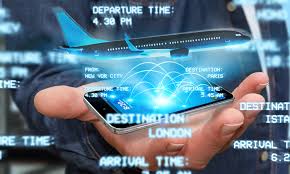:
In today’s digitized world, air travel is undergoing a major transformation — and at the center of this change is the Traveler Digital ID. Once a futuristic idea, this concept is now being implemented in real-world scenarios, promising a seamless, secure, and efficient travel experience.
What Is a Traveler Digital ID?
A Traveler Digital ID is a digital form of identification, usually stored on a smartphone or in a secure digital wallet, which can be used at airports for check-in, security, immigration, and boarding. These IDs are typically linked to biometric data like facial recognition or fingerprints, allowing passengers to travel without showing physical documents at every step.
How Traveler Identification Evolved Over Time
1. Paper Passports
In the early 20th century, travelers used basic paper passports. These were manually verified by border agents and lacked any form of automation.
2. Machine Readable Passports (MRPs)
In the 1980s, the International Civil Aviation Organization (ICAO) introduced machine-readable passports, which added a scannable section to speed up border checks.
3. Biometric Passports
By the 2000s, many countries adopted biometric passports (ePassports), which contain a chip storing the traveler’s biometric data. This was a major leap toward automation and identity verification.
4. Digital Identity Concepts
With the rise of smartphones and biometric phone authentication, the idea of digital identities became more viable. Travelers could soon carry secure digital credentials instead of physical documents.
Traveler Digital ID Today: A Growing Reality
Several global initiatives are turning this concept into a functional system:
IATA One ID
The International Air Transport Association launched the One ID project to enable a single biometric token for the entire journey, from check-in to boarding.
Mobile Passport Control (MPC)
In the United States, Customs and Border Protection offers the Mobile Passport Control app, allowing travelers to submit information digitally and reduce time at border checkpoints.
EU Digital Identity Wallet
The European Union is developing a secure digital identity wallet that could eventually include travel documents, facilitating cross-border travel and e-government services.
ICAO Digital Travel Credential (DTC)
ICAO is setting international standards for Digital Travel Credentials, which aim to be globally recognized and as legally valid as traditional passports.
Key Benefits
- Faster processing at airport checkpoints
- Improved security through biometric verification
- Touchless travel, crucial in a post-COVID world
- Global interoperability with standardized systems
Challenges Ahead
- Privacy concerns around storing and sharing biometric data
- Legal recognition and global standardization of digital IDs
- Accessibility issues for travelers without smartphones
- Cybersecurity threats, such as data breaches or identity theft
A New Era Begins
Traveler Digital ID is no longer just a concept. With real-world pilot programs, government adoption, and international cooperation, we are entering a new era of aviation. Air travel is becoming more secure, more efficient, and more connected than ever before — and digital identity is leading the way.




